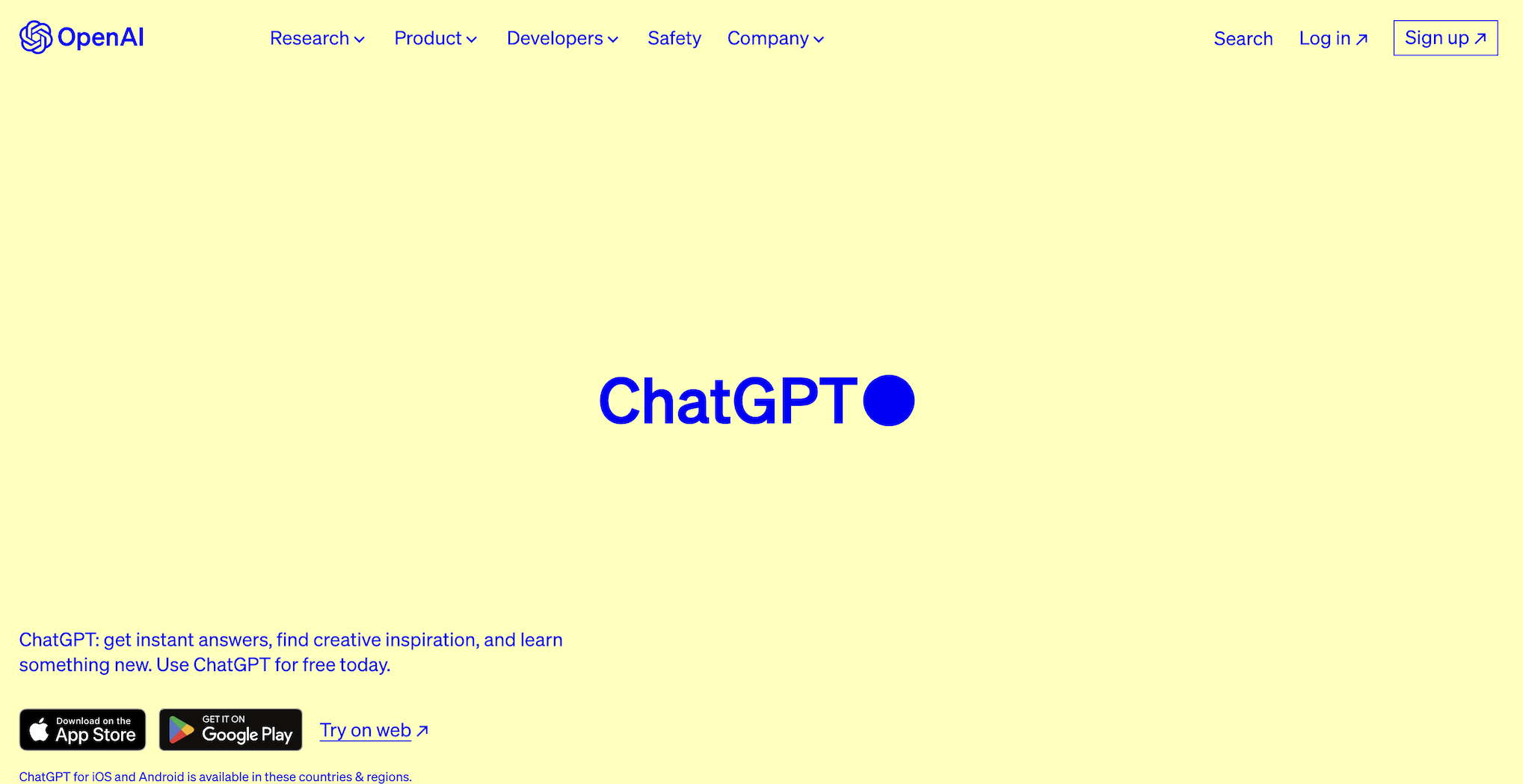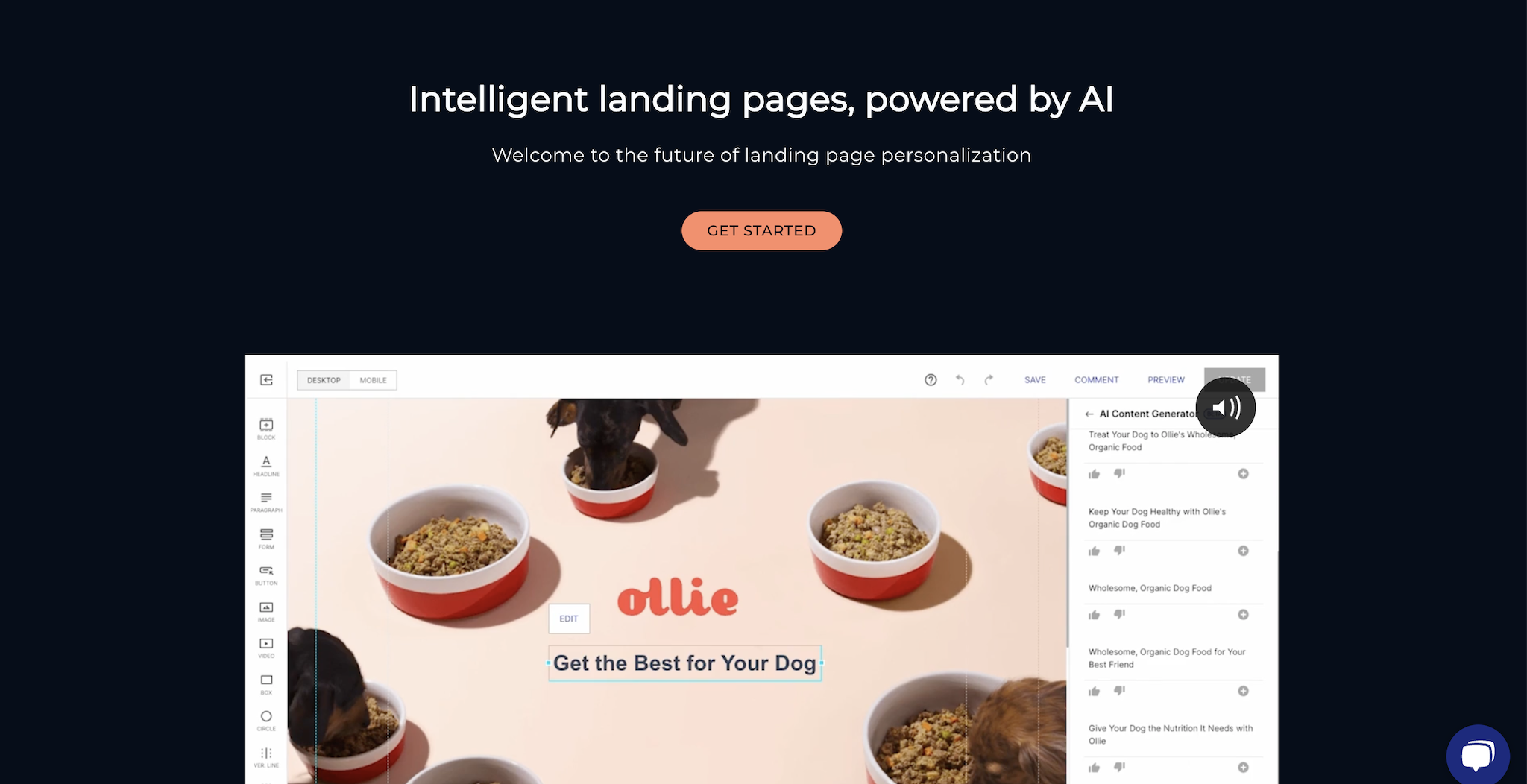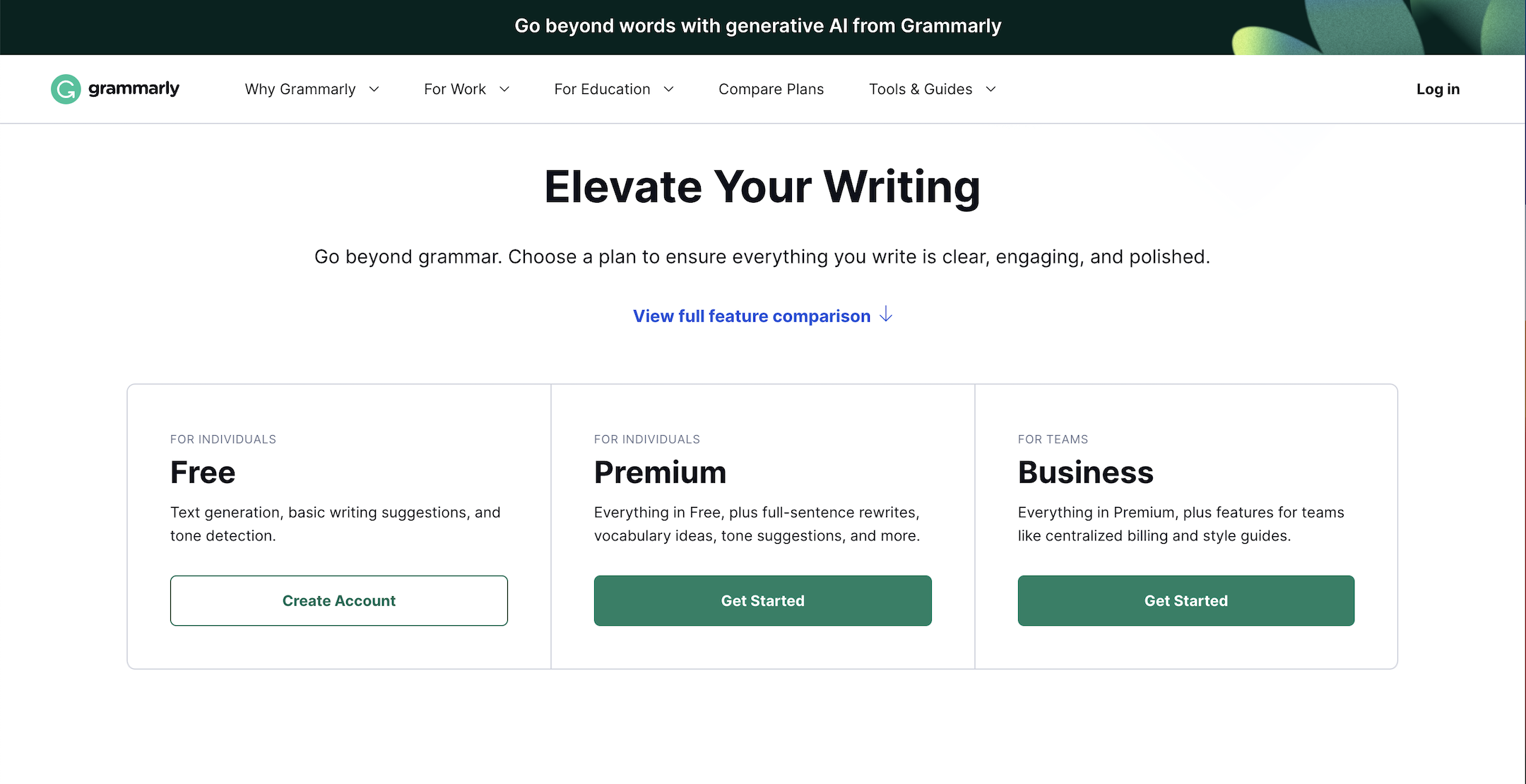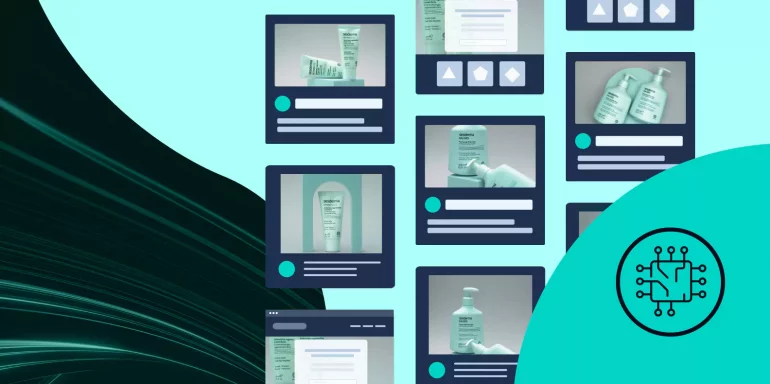- Understanding Generative AI: How It Works
- Strengths and Weaknesses of AI Content Tools
- Exploring OpenAI: Empowering Responsible AI Usage
- Ethical Considerations in AI Content Creation
- Leveraging AI Content Generation in Marketing
- Recommended AI Tools
- Getting Started with AI Content Creation Tools
- Looking Ahead: The Future of AI in Marketing
In 2023, we stand at the precipice of a new era in marketing powered by Artificial Intelligence (AI), and this couldn’t come at a better time. Caught between a recession and a persistent labor shortage, marketers strive to accomplish more with fewer resources. Fortunately, AI content creation technology presents a solution that eases this challenge, not by replacing content creators, but by introducing efficiencies that transform how marketers and content creators collaborate.
This blog offers a comprehensive overview of AI technology and best practices and guidance tailored specifically to digital marketers interested in incorporating AI into their workflows. Additionally, we will introduce recommended AI tools that can enhance and optimize your team’s content creation efforts.
Understanding Generative AI: How It Works
Generative AI uses artificial intelligence algorithms and technologies to produce written or visual content. Whether it’s generating written articles, product descriptions, social media posts, videos, graphics, or even musical compositions, generative AI leverages machine learning to create new content based on patterns and relationships discovered in existing data.
The generative AI process typically involves the following steps:
- Data collection: A vast dataset of content is gathered to train the AI model, enabling it to learn common patterns and relationships present in the content.
- Model training: The AI model trains using various machine learning algorithms such as transformer model, decision trees, or deep learning. The goal is to teach the model to recognize patterns and relationships in the content and generate new content that closely aligns with the style and structure of the existing data.
- Content generation: Once the AI model is trained, it can generate fresh content by inputting a prompt or a set of parameters. Drawing upon the learned patterns and relationships, the AI generates new content that shares similarities in style and structure with the existing data.
- Quality assessment: The final step involves assessing the quality of the generated content. This evaluation may include human review or metrics like readability, coherence, and relevance to determine if the content meets specific standards. If the generated content falls short, the model can be retrained or modified to enhance performance.
Strengths and Weaknesses of AI Content Tools
You may be skeptical about whether AI can truly create compelling copy. AI tools have become adept at generating written content that is clear, concise, and adheres to natural speech patterns. They can produce anything from informative, Wikipedia-style content to poems and even school essays (more on this in the “Ethics” section). As such, these tools excel at generating straightforward, informational content, facilitating preliminary topic research, and stimulating idea generation.
However, AI tools also have their limitations. In its current form, AI-generated text lacks the personality and creativity that human creators possess. While an AI tool might produce a poem, its artistic quality will be lacking. Furthermore, AI-generated content tends to be repetitive, like certain high school students trying to meet word count requirements. Consequently, it can pass as human-written work in school assignments.
The most significant weakness to watch out for, especially for marketers, is accuracy. AI can sometimes generate fictitious information, a phenomenon referred to as “hallucinating” by AI researchers. This accuracy concern extends to AI image and video creation technologies, which struggle to create realistic hands, with the presence of a six-fingered hand often exposing an AI-generated image or deep fake video.
Exploring OpenAI: Empowering Responsible AI Usage

OpenAI, a research organization founded in 2015, is at the forefront of promoting and developing safe and responsible AI for the benefit of humanity. Born out of concerns about the potential catastrophic effects of artificial general intelligence (AGI) in the wrong hands, OpenAI aims to ensure that AI technology develops in a manner that prioritizes safety and benefits all of society. In late 2022, OpenAI made a significant announcement, releasing ChatGPT to the public for free and allowing online access to this powerful generative AI tool.
The public release of ChatGPT generated substantial media buzz, bringing the concept of generative AI into the mainstream consciousness. Since its availability, people have enthusiastically embraced ChatGPT, utilizing it for myriad purposes, including writing resumes, school essays, poetry, and even computer code.
ChatGPT’s training involved a large and diverse dataset and reinforcement learning from human feedback (RLHF). By opening up ChatGPT to the public, OpenAI can harness the collective power of users to improve the tool through real-world applications and ongoing refinement continuously.
Ethical Considerations in AI Content Creation
The rise of generative AI has brought forth many ethical concerns, given its potential to transform our relationship with written and visual content. Some of these ethical considerations include:
Proliferation of misinformation: The ease and speed with which AI tools create content raise the risk of disseminating misinformation broadly. Since AI content creation tools source information from various online platforms, false information can inadvertently be incorporated into new content, amplifying its reach.
Reinforcing societal bias: AI algorithms can perpetuate existing biases in society. This is due to historical biases present in the training data as well as the design of the algorithms, which may prioritize certain factors over others.
Ownership and attribution of content: AI tools often source information from multiple sources without transparent attribution, making it challenging to verify the credibility of the information generated. Additionally, there is a potential for AI-generated content to infringe upon intellectual property rights.
Plagiarism and cheating: The ability of AI to generate passable essays raises concerns about academic integrity and the potential for students to misuse AI tools to cheat on assignments.
Navigating these ethical challenges requires marketers to stay informed about policy responses, popular opinion, and evolving standards. Taking responsibility for content created via AI tools is crucial, just as one would for content created by human team members. Responsible usage necessitates a significant shift in how we approach content creation and the way we work.
Leveraging AI Content Generation in Marketing
Machine learning and natural language processing empower AI to analyze product/service features, existing content, customer data, and trends, ultimately generating highly personalized marketing content at scale across multiple channels. Consider the following examples:
Product descriptions: AI can analyze the features and benefits of a product or service, crafting descriptions that resonate with potential customers.
Blog posts: By analyzing existing content, AI tools can generate fresh blog posts on various topics related to a brand’s industry or niche, ensuring engaging, informative, and SEO-optimized content.
Social media posts: AI can create social media posts tailored to a brand’s target audience, optimizing them for engagement. It can also leverage social media trends to generate timely, relevant, and eye-catching content.
Email marketing campaigns: AI can personalize email campaigns by creating customized headlines, copy, and designs for each subscriber.
Personalized landing pages: Leveraging user data and behavior, AI can create landing pages customized to each visitor’s unique interests and preferences. It can optimize layout, design, and messaging to enhance conversion rates. A/B tests and multivariate tests: AI tools streamline the A/B testing process by creating predictive models that forecast the impact of design or copy variants on conversion rates. They generate variations to test and analyze the data for patterns, trends, and insights to optimize performance.
A/B tests and multivariate tests: AI tools streamline the A/B testing process by creating predictive models that forecast the impact of design or copy variants on conversion rates. They generate variations to test and analyze the data for patterns, trends, and insights to optimize performance.
Recommended AI Tools
To facilitate your AI-driven content creation endeavors, consider utilizing the following AI tools:
Copywriting: Copy.ai and Jasper provide AI-generated high-quality content, serving as excellent starting points for writers facing writer’s block.
Copy editing and brand consistency: Grammarly and Hemingway assist writers in refining their work by offering suggestions for improvement, reducing writer’s block, and enhancing writing quality. Grammarly’s Business tool also helps maintain brand consistency across channels.

Topic suggestions: Quill and OpenAI’s GPT-3 provide topic suggestions, inspiring writers with fresh ideas and fueling their creativity.
Personalized landing pages: Instapage employs AI to create content for personalized landing pages tailored to each visitor’s needs and behavior. It also facilitates A/B testing to improve landing page performance.
Visual design: Canva employs AI to suggest design templates, layouts, and color schemes personalized to each user’s preferences.
Image creation: Dall-E and Stable Diffusion are popular tools for generating original images based on textual descriptions.
Getting Started with AI Content Creation Tools
The potential for AI content creation to scale marketing campaigns is immense. To integrate AI tools effectively into your marketing processes, consider the following best practices:
The quality of output relies on the quality of input: Provide specific and detailed prompts, including directions on tone, style, and length, to guide AI tools effectively.
Keep your target audience in mind: Tailor your prompts to match the preferences and interests of your audience, ensuring the generated content resonates with them.
Pair AI tools with human expertise: AI tools should augment human skills rather than replace them. Use AI to boost productivity while allowing writers to contribute creativity and critical thinking.
Utilize AI as a creative tool: AI tools can help overcome writer’s block by providing a range of prompts and ideas to generate a first draft. Subsequently, writers can add their creative touch and refine the content.
Maintain human oversight: AI-generated content requires human oversight to ensure accuracy, relevance, and alignment with brand values. Clearly define the tasks AI can handle and those that require human management.
Provide training for maximum effectiveness: While AI tools are user-friendly, training and practice are necessary for optimal utilization. Offer your writers training on effectively integrating AI tools into their writing process.
Be patient: AI tools are continuously learning. As models improve over time, they become more intelligent and adept at generating high-quality content.
Looking Ahead: The Future of AI in Marketing
In the coming years, we can anticipate an explosion of innovation and value creation as AI empowers marketers to generate more and better content faster and at lower costs. This will allow human writers to focus on higher-level strategic and creative functions. The AI-supported marketing content of the near future will be finely targeted, personalized, and virtually indistinguishable from human-created content.
If you still need to integrate AI content tools into your marketing processes, now is the time to begin. Embrace AI’s opportunities to scale your content-based marketing campaigns and optimize your content creation efforts.
With hundreds of easy-to-use templates, AI content generation capabilities, A/B testing features, and access to consultative conversion experts, tools like Instapage make it simple for marketers to create campaigns and landing pages at scale, improving digital ad campaign performance and increasing return on ad spend.
Better AI content generation = higher ROAS
The future is fast approaching, and businesses that embrace AI will dramatically outpace those that hesitate. Book a demo or start your free trial today and embark on the journey of leveraging AI to transform your marketing strategies and achieve new levels of success.

Try the world's most advanced landing page platform with a risk-free trial.
